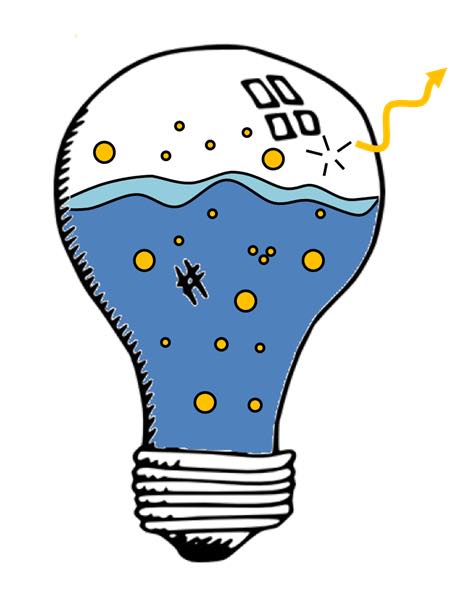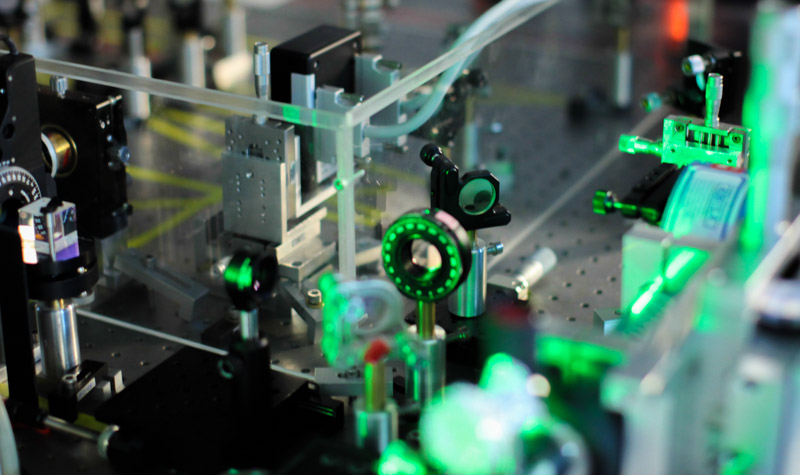Master and PhD position on Quantum Fluids of Light
Quantum Hydrodynamics
Quantum fluids Physics is the study of hydrodynamic systems which demonstrate a quantum behavior. A large range of many-particle systems are currently under intense investigation, from liquid Helium, to electrons in solids, to quark-gluon plasma and trapped gases of ultra-cold atoms. Surprisingly, these very different systems show similar behavior when the thermal de Broglie wavelength becomes comparable or larger than the average inter-particle spacing. In this regime, the Bose versus Fermi statistics of the particules starts playing a critical role in determining the properties of the fluid. For exemple, in a non-interacting Bose gas a macroscopic fraction of the particules will accumulates in the lowest-energy state leading to a Bose-Einstein condensate. When interactions between particules are not negligible, the Physics become even more fascinating with the appearance of purely quantum effects such as supra-conductivity and superfluidity.
Quantum fluids of light
Historically, most work in many body-physics (theoretical and experimental) are dealing with massive material particules (atoms, electrons…). However, we know since the early days of quantum mechanics, that photons in a box can be interpreted as a massless Bose gas of non-interacting particules and this interpretation leads to a correct calculation of the black-body radiation. Recently, it has been realized that under suitable circumstances photons can acquire an effective mass and will behave as a quantum fluid of light with photon-photon interactions. Striking experimental demonstrations of superfluidity and other quantum hydrodynamics effects such as quantized vortices and solitons have been performed using semi-conductor planar micro-cavities. Building on these experiments done by the LKB group, we propose to use a different geometry (propagating light instead of confined) to study quantum fluids of light.
PROJECT : Propagation of a polariton condensate in an potential optically reconfigurable.
Quantum wells embedded in microcavities are systems where the interaction between matter (excitons) and the light (photons) exhibits unusual characteristics. In the regime of strong coupling between excitons and the photons, the fields can be described as a pseudo-particle, which is a mixed state of light and matter. These pseudo-particles are called polaritons.
These polaritons are bosons that are confined in a 2D structure (transverse plane of the microcavity). Due to Coulombian interactions, fascinating phenomena such as superfluidity and Bose-Einstein condensation can be observed.
The LKB Quantum Optics group has a recognize expertise in this domain and is looking forward on developing a new experimental setup to study the propagation of polariton superfluids in an optically controlable potential landscape. As we already demonstrated in the group, a defect in the microcavity acts like a potential well and induces the formation of vortices, anti-vortices and solitons. With a non-resonant light source, one can induce artificial defects in the cavity by injecting excitons. We aim at building an experiment in which the transverse beam profile can be set arbitrarily and reconfigure easily. This can be achieved using a Spatial Light Modulator (SLM) in addition with an algorithm that generate a numerical hologram in the Fourier plan.
The internship is proposed to Master 2 students and can be followed by a PhD in the group.
Interested candidates should contact Quentin Glorieux (quentin.glorieux@lkb.upmc.fr) and Alberto Bramati (bramati@lkb.upmc.fr) for more details. For more details, please check our website: www.quantumoptics.fr.


